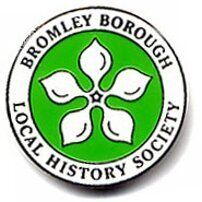Bromley Borough Local History Society
Registered Charity
No. 273 963

Bromley Borough Local History Society
The buildings are colleges in the original meaning of the word – to collect or gather together, in this case people. The first Bromley College was built in 1666 under the will of the recently deceased Bishop of Rochester, John Warner. He had been kicked out of his home, the Bishop’s Palace in Bromley, during the Civil War and when he got his home back following the Restoration in 1660 he realised that there were many clergymen's widows who were not so lucky and wanted to establish a place for them to live. This building that fronts London Road, behind a high wall and trees, is one of Bromley’s few Grade 1 listed properties. It is believed to have been designed by Captain Richard Ryder, one of Sir Christopher Wren’s associates.
Behind are two quadrangles each containing small individual houses with basement kitchens and narrow staircases. They were sympathetically converted in the early 20th century into flats. The first quadrangle is the original Bromley College. The second quadrangle behind was added in the 18th century and then in 1840 Mrs Sophia Sheppard, a wealthy clerical widow, funded the building of separate block of cottages, Sheppard’s College, behind the main buildings. This was originally for the daughters of widowed clergy who had cared for their mothers but became homeless when their parent died.
Richard, our expert guide, shows a print of the college as it appeared just after it was built and with only the single quadrangle. The front is little changed apart from the dormer windows and supporting buttresses added in the 19th century. A larger version of this drawing can be seen here.
A view of the protected entrances to the flats in the second quadrangle, added in the late 18th Century.
Today there is a thriving community – some in their 90s – of men and women living independently in the Colleges and a waiting list for the flats. There are communal activities, a Friends Group to help with fundraising and a chapel that has had to be extended twice to cater for the community.
Member of BBLHS listening to Richard with organiser Mike Marriott third from left.
As you go through the main entrance arch you pass under the clock tower, seen here from the chapel entrance, looking back towards the London Road and the Magistrates' court.
The delightful interior of the chapel.
One of the stained glass windows in the chapel.
A fascinating discovery, made relatively recently when old vegetation was cleared away, were what appeared to be genuine graffiti scrawled on the college wall expressing a young lady's fear of her virtue were there to be a Napoleonic invasion!